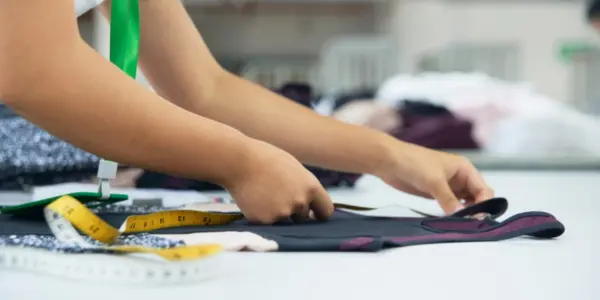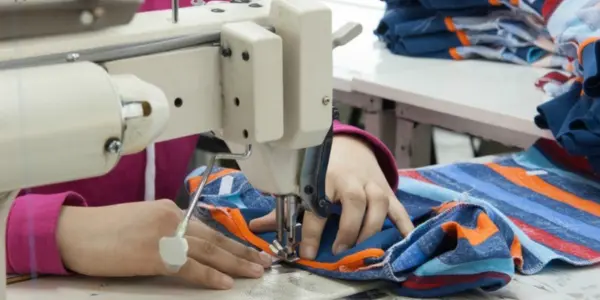In the world of fashion, where trends shift like desert sands, one thing remains constant: the demand for quality clothing. Whether you’re a seasoned designer with a global brand or a budding entrepreneur launching your first clothing line, ensuring quality control is paramount. It’s the invisible thread that stitches together customer satisfaction, brand reputation, and ultimately, your success.

This blog post delves deep into the world of clothing quality control (QC). We’ll explore the different stages of inspection, the factors that determine a garment’s quality, and the benefits of implementing a robust QC program. By the end, you’ll be equipped with the knowledge and tools to ensure your clothing meets the highest standards.
The Stages of Clothing Quality Control
Quality control isn’t a one-time event; it’s a continuous process that weaves itself throughout the entire garment creation journey. Here’s a breakdown of the key stages:
- Pre-Production QC: This stage lays the groundwork for a successful garment. Inspectors meticulously examine fabric for defects, inconsistencies in color or weight, and ensure the composition matches the specifications (think cotton, polyester blends, etc.). Additionally, pattern grading and sample development are scrutinized to guarantee a perfect fit and style.
- During Production QC: With the green light on pre-production, the focus shifts to the manufacturing floor. Inspectors keep a watchful eye on the cutting process, ensuring precise fabric allocation and adherence to patterns. Sewing techniques, seam strength, and hardware functionality (buttons, zippers) are rigorously checked to prevent faulty construction.
- Finished Garment QC (Pre-Shipment): Before your garments embark on their journey to store shelves or customer doorsteps, a final inspection takes place. This comprehensive check ensures finished garments meet all the pre-determined quality standards. Inspectors meticulously examine for:
- Sewing defects: Missed stitches, uneven seams, or loose threads are identified and rectified.
- Colorfastness: Garments are tested to ensure colors don’t bleed or fade during washing or exposure to sunlight.
- Measurements: Sizing consistency across the batch is verified to avoid fit discrepancies.
- Finishing touches: Labels, buttons, zippers, and trims are checked for proper placement and functionality.
- Packaging: Packaging integrity ensures garments arrive at their destination damage-free.
The Hallmarks of High-Quality Clothing
Beyond the meticulous inspection processes, several key factors contribute to a garment’s overall quality:
- Fabric Selection: The foundation of any garment is its fabric. High-quality fabrics boast superior durability, drape beautifully, and offer a comfortable feel against the skin. Opt for natural fibers like cotton or linen for breathability, or well-made synthetic blends that combine functionality with aesthetics.
- Construction Techniques: Skilled craftsmanship is evident in strong, even seams, precise buttonholes, and neatly finished hems. These details not only enhance the garment’s aesthetics but also contribute to its longevity.
- Fit: A well-fitting garment flatters the wearer’s body shape and provides a comfortable range of motion. This requires meticulous attention to detail during the pattern development and grading stages.
- Hardware: Quality zippers, buttons, and other hardware components elevate the look and feel of a garment. They should be functional, durable, and complement the overall design aesthetic.

The Benefits of a Robust QC Program
Investing in a robust quality control program reaps a multitude of benefits for your clothing brand:
- Enhanced Customer Satisfaction: Delivering high-quality garments translates to happy customers. Consistent quality builds trust and loyalty, encouraging repeat purchases and positive word-of-mouth recommendations.
- Reduced Returns and Refunds: A robust QC program minimizes the chances of defective garments reaching customers. This translates to fewer returns, refunds, and the associated logistical hassles, ultimately saving you time and money.
- Brand Reputation: When customers consistently experience the quality they expect, your brand reputation flourishes. This fosters brand loyalty and attracts new customers seeking well-made clothing.
- Improved Production Efficiency: By identifying and addressing issues early in the production process, you can streamline your workflow and minimize costly delays.
- Reduced Waste: Proactive QC measures help prevent defective garments from being produced, minimizing fabric and resource waste.
Conclusion: The Garment’s Unsung Hero
Quality control might not be the flashiest aspect of the fashion industry, but its importance cannot be overstated. It’s the silent guardian ensuring your garments meet the highest standards, fostering customer satisfaction, and propelling your brand towards success. By implementing a thorough QC program at every stage of production, you can ensure your clothing speaks volumes about your commitment to quality and craftsmanship.

You must be logged in to post a comment.